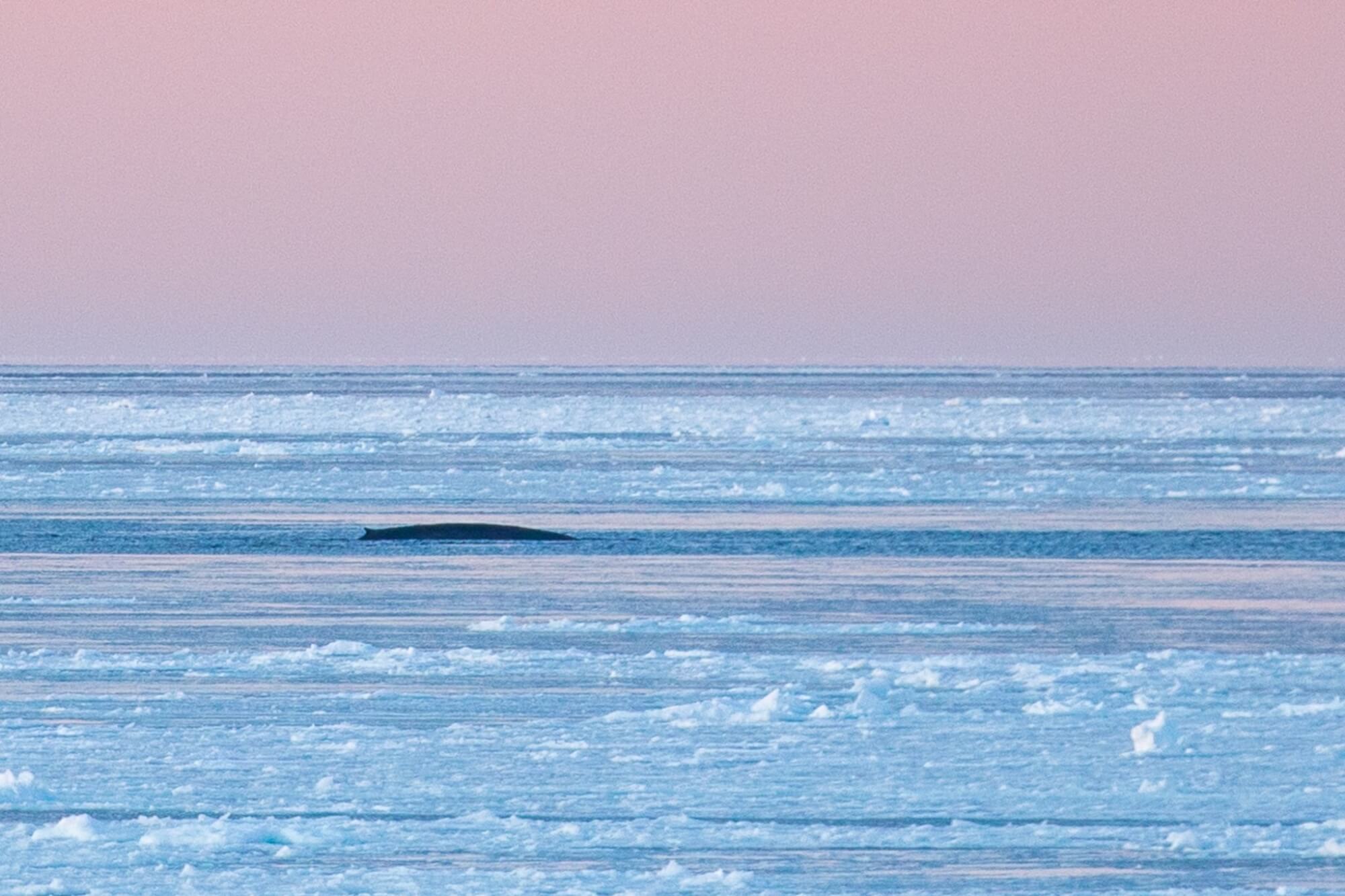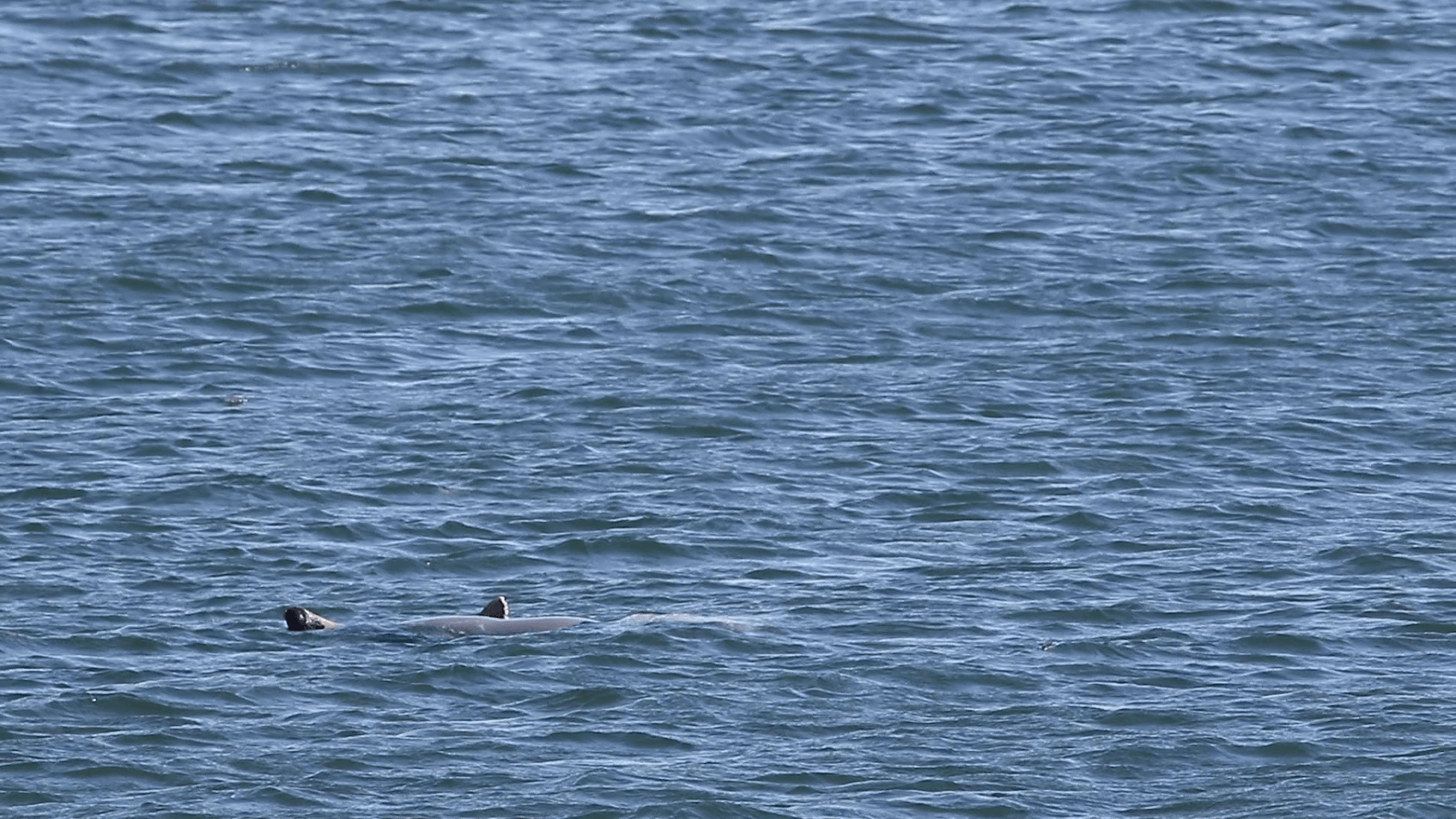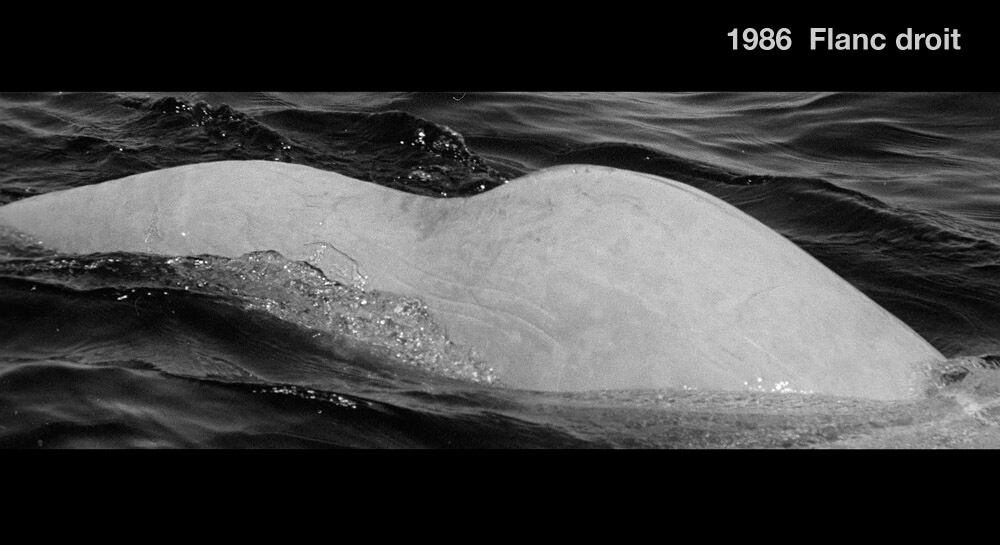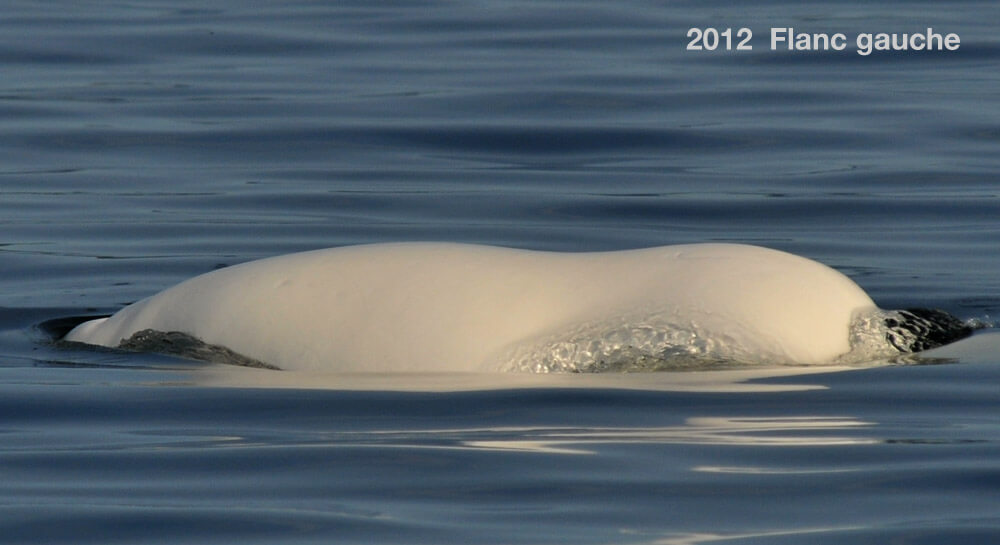Sunny days, seabirds flying gracefully over the river as they forage for food, reflections in the crystal clear water and glistening ice… What more could one ask for? Marine mammals, of course!
On February 19, two giants were observed in the area east of Grosse Boule Island off Sept-Îles. Even if they were far from the coast, their powerful blasts into the sky betrayed their species: they were blue whales. Northerly winds over the past few days have blown the ice away from the coast, but a few black spots were spotted offshore, which may have been seals.
In the same area, Iceland and glaucous gulls have been regularly seen circling over the water. These two species breed in the Arctic and winter along the shores of the St. Lawrence. A great black-backed gull, named for its size and dark mantle, creates quite a surprise when it shows up, as this species usually winters along the eastern U.S. seaboard.
Seals and a somewhat special beluga
Between Les Escoumins and Les Bergeronnes, harp seals have been observed offshore. Interestingly, this pinniped is said to be one of the only ones to swim on its back. Even if the origin of this behaviour remains an enigma, this position might allow the harp seal to better scan the waters below to spot its prey. At Cap de Bon-Désir in Les Bergeronnes and Pointe de l’Islet in Tadoussac, a few harbour seals have been observed resting on the ice.
At the mouth of the Saguenay Fjord on Saturday, February 18, a naturalist and wildlife photographer takes a picture of two belugas. During the photo analysis, one of them seems to show some very distinctive characteristics… Could it be Pascolio , an individual that GREMM (Group for Research and Education on Marine Mammals) knows well? This animal was first sighted in 1985 by the research team and is easy to recognize thanks to its spinal deformations and the scarring on its back. This female is regularly observed by scientific teams and is often present in the Saguenay. Subsequent to GREMM’s image analysis, it is impossible to confirm whether the individual was indeed Pascolio due to the angle, though there is a certain resemblance.
Little ice on the St. Lawrence
As February draws to a close, the scarcity of ice cover is cause for concern (article in French). In an average year, ice cover across the St. Lawrence might stand at between 40 and 60 km3, whereas this year that figure is a mere 9 km3. An alarming signal of climate change, the repercussions of this decline in ice cover are numerous. For example, the endangered St. Lawrence beluga may be negatively affected by this phenomenon. In winter, belugas from this population migrate to the northern portion of the Gulf and along the Gaspé Peninsula. Within these regions, they seem to favour areas with 70 to 90% ice cover. It is believed that this ice offers them protection against harsh winter weather, thereby enabling them to limit their energy expenditure. Additionally, the river banks also benefit from this sheltering effect against coastal erosion.
.
Share your observations!
Have you seen any marine mammals in the St. Lawrence? Whether it’s a spout offshore or just a couple of seals, drop us a line and send your photos to [email protected]!









